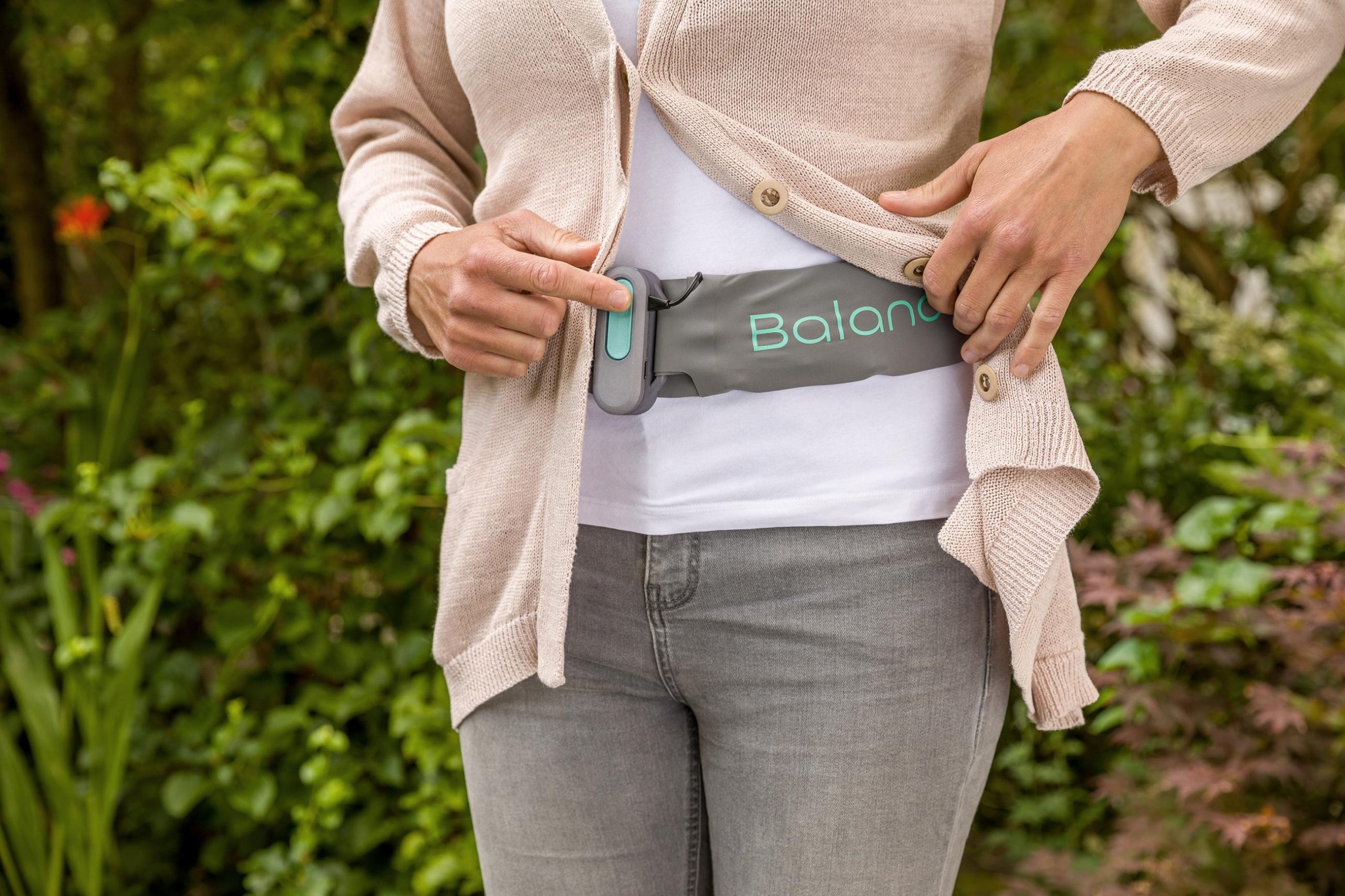
Poorly functioning balance organs not only lead to imbalance when walking but often also lead to feelings of isolation and broader health complaints. Maastricht University came up with a solution: a hip belt that offers the body signals to stay in balance. The effect turned out to be so good, that a commercial product was made of it. Last week it came on the market.
After the first patient studies in 2018 proved the effectiveness of the concept, Elitac Wearables was invited to the project. The Utrecht-based company that specializes in flexible electronics and the development of haptic feedback in clothing has subsequently made the design suitable for large-scale production.
The result is the BalanceBelt, an equilibrium belt that uses ‘haptic feedback’. Small correction signals on the hip help people suffering from severe Bilateral Vestibular Loss (BVL) to maintain their balance – and regain their independence.
Imbalance
BVL is an abnormality in which the organs of balance in the inside of the ears function poorly or not at all. The vestibular system then provides insufficient information to patients who find it difficult to control their body position. This causes imbalance and difficulties in walking. Serious BVL is estimated to occur in more than 80 out of 100,000 people, affecting 6 million people worldwide. More than 20% of people over the age of 65 suffer from poor balance, at least in part caused by the declining functioning of the balance organs.
Vibration feedback

The concept of the Balancebelt was invented and developed for daily use by professor Herman Kingma, of Maastricht University. “For many patients with a serious loss of balance function, physiotherapy and other available treatments are not sufficient”, he explains. “Haptic feedback – vibratory signals confirmed on the body – can help patients with balance disorders regain their balance.”
Kingma explains the effect of his invention: “A sensor in the belt feels, as it were, where gravity is. If someone moves too far in the wrong direction, the belt produces vibrations. This is just enough to make sure you don’t get out of balance and gain just a little bit more certainty.” According to Kingma, this is necessary, because not being able to rely on your balance creates insecurity that causes loss in the joy of life.
Kingma and the Maastricht University Medical Center (MUMC+) developed the first version of the BalanceBelt in cooperation with Maastricht Instruments. After the first patient studies in 2018 proved the effectiveness of the concept, Elitac Wearables was involved in the project. The BalanceBelt contains several small vibration motors and an accelerometer. The belt senses the direction in which the wearer is leaning and provides vibration feedback to improve the experienced body position. The brain of the user interprets this feedback so that they can correct their posture and unconsciously improve their balance. It is not necessary to consciously pay attention to the feedback signals. The belt works standalone and can be used continuously for up to 16 hours a day.
Lightweight and comfortable
Merijn Klarenbeek, co-founder and CEO of Elitac Wearables, says the belt is now lightweight and comfortable to wear. “This is a great example of a wearable in which haptic feedback provides incredible added value, especially as treatment alternatives for BVL patients are so limited.”
The feedback from the patient trials was “quite moving”, Klarenbeek says. “Patients commented that the belt gave them back their independence and allowed them to enjoy their lives for the first time in a long while. Some of them even commented that they were able to get out of their wheelchairs and walk again.”
The BalanceBelt is now available via BalanceBelt.net and Maastricht University Medical Centre+.








